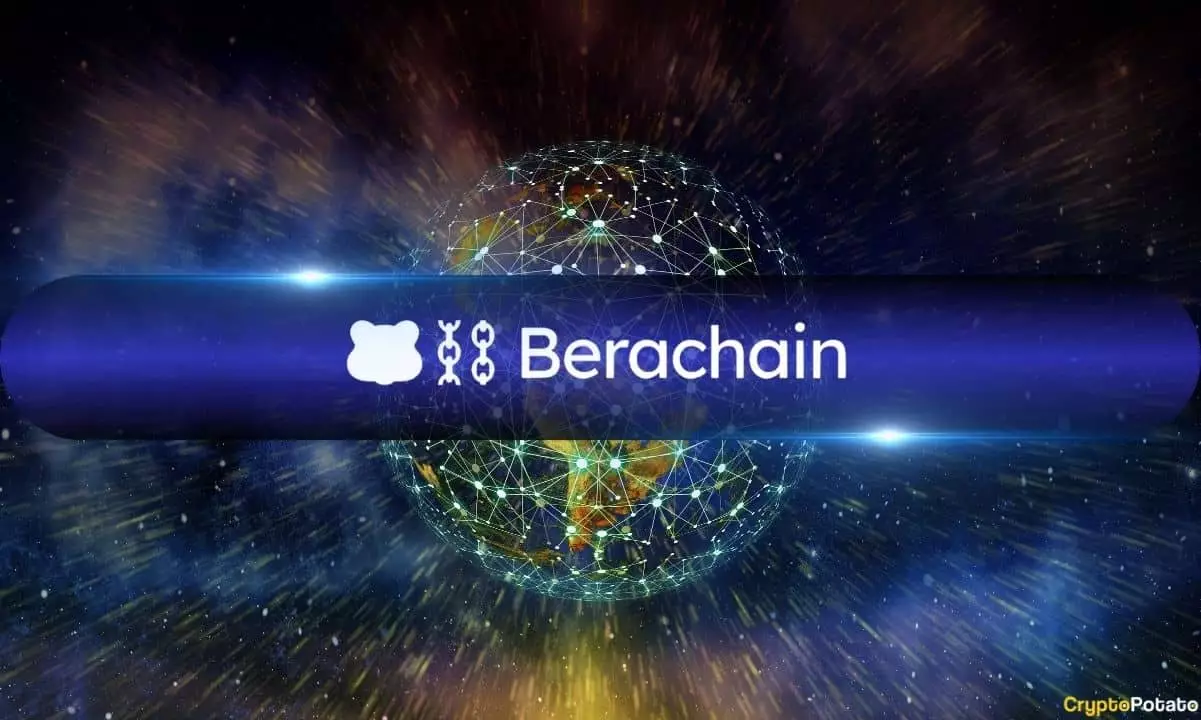In a landscape where blockchain innovations burgeon daily, Berachain has emerged as a noteworthy contender within a remarkably brief timeframe. Recently making headlines, this EVM-equivalent Layer 1 blockchain achieved an astonishing feat by surpassing several established competitors, including SUI, Avalanche, and Arbitrum, in Total Value Locked (TVL) shortly after its Mainnet debut. With a TVL that soared to an impressive $3.27 billion at its peak, Berachain has repositioned itself within the decentralized finance (DeFi) arena, now occupying a secure spot among the top contenders.
The significance of this achievement is amplified by the presence of yet-to-launch native protocols, suggesting that Berachain is poised for continued growth and expansion. Despite a slight withdrawal to $3.27 billion following its peak, the blockchain still stands tall, outpacing rivals such as SUI ($1.4 billion) and AVAX ($1.23 billion). Additionally, with a circulating market cap of around $700 million, Berachain has undeniably solidified its standing within the top 100 cryptocurrencies on platforms like CoinMarketCap.
The surge in Berachain’s TVL can be attributed to the robust performance of key protocols within its ecosystem. Leading this charge, the liquid staking platform Infrared Finance commands a noteworthy $1.52 billion in TVL. Following closely are Kodiak, a decentralized exchange with $1.1 billion locked in, and the yield farming protocol Concrete, which has an impressive nearly $1.11 billion.
Such considerable locked assets not only reflect user trust in Berachain’s framework but also exemplify the effective incentives and functionalities provided by these protocols. These dynamics contribute to the overall ecosystem, fostering a thriving environment for users who engage in various decentralized activities.
While Berachain’s advancements are commendable, they have not come without controversy. The decision made by the Bera Foundation to distribute airdrops—characterized as among the industry’s most significant—sparked discontent within the community. Nearly 15.75% of the total token supply (500 million) was allocated through this airdrop, yet the distribution strategy drew criticism, especially regarding perceived inequities. Notably, testnet users received only 1.65% of these tokens, while holders of the Bong Bears NFT were allocated significantly more at 6.9%. Such discrepancies generated substantial discussions on social media, highlighting the ongoing challenge of community relations amid rapid growth.
In defense, the Berachain Foundation attributed these disparities to the complex nature of targeting within the token distribution process—a justification that reflects the delicate balance between rewarding early supporters and managing broader community expectations.
Beyond immediate growth indicators, Berachain also demonstrated robust investment appeal. In April, it successfully raised $100 million in a Series B funding round co-led by notable firms, including Brevan Howard Digital and Framework Ventures. This substantial financial backing not only reinforces confidence in Berachain’s vision but also facilitates its strategic expansion into key markets across Asia, Latin America, and Africa.
Co-founder “Smokey The Bera” articulated the overarching goal: to build a blockchain rooted in genuine user feedback and developer input. This foundational approach could position Berachain favorably, ensuring its relevance in a competitive space while continuously adapting to the needs of its community.
Berachain’s recent rise is a potent indicator of its potential within the blockchain sector. While it grapples with community concerns and the challenges of its rapid growth trajectory, its robust TVL and strategic partnerships signal a promising future for this developing ecosystem.
















Leave a Reply